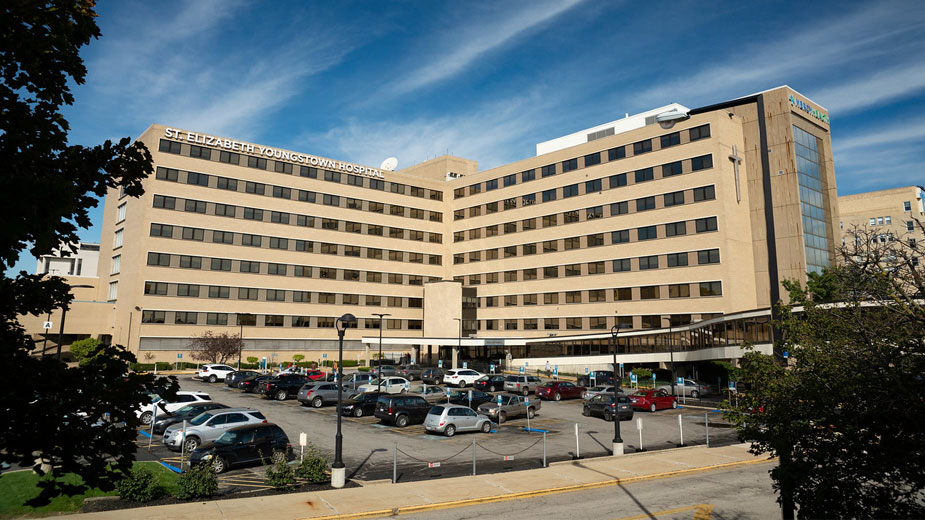Local Hospital Capacity Trends Down as ICU Beds Dwindle
YOUNGSTOWN, Ohio — New data released late Monday by the Ohio Center for Journalism documents just how low hospital capacity is here and across Ohio.
Officials with the Ohio Department of Health released additional hospital capacity and equipment records to the center’s Eye on Ohio nonprofit newsroom, disclosing SurgeNet records from Nov. 25 through Dec. 4. The numbers showed an overall decrease in beds and ventilators, although local availability varied.
Intensive care capacity at hospitals in the Mahoning Valley is declining, particularly at the three local hospitals operated by Mercy Health: St. Elizabeth Youngstown, St. Elizabeth Boardman and St. Joseph Warren.
As of Dec. 4, Mercy Health St. Elizabeth Youngstown and St. Joseph Warren Hospital had zero available adult ICU beds.
As a Level 1 trauma center and stroke center, St. Elizabeth Youngstown is “busy at baseline,” but with a recent influx of COVID-19 patients, “We’re definitely in the thick of it here,” said Lisa Burich, a registered nurse at the hospital and ER team leader. Burich spoke to Gov. Mike DeWine during a virtual press conference Monday.
“The hospital has been at capacity,” Burich said. “We’re holding critically ill patients here in the ER for sometimes days at a time. So we’re just really bogged down.”
Of the local hospitals that have ICU beds, Steward Health Care’s Trumbull Regional Medical Center has the most with eight. St. Elizabeth Boardman and Salem Regional Medical Center each have six and East Liverpool City Hospital has four.
Statewide, there are 477 critical care beds available. About a month ago, there were 895, according to the data. At the start of the pandemic in March, there were more than 2,700.
On Monday, the ODH reported 9,273 new cases since Sunday, bringing the total case count to 484,297. ODH also reported 336 new hospitalizations for COVID-19, 40 of which are admissions to intensive care.
Because DeWine is expecting a rise in cases from the Thanksgiving holiday, he said it’s too soon to confirm that the new case rate is starting to flatten. And while he believes the masking order and curfew have helped to slow the rate of increase, the levels are still “much to high,” he said.
“As the heads of hospitals have told me, it’s unsustainable at this level,” DeWine said.
The Ohio Center for Journalism filed a public records lawsuit to obtain the data. After a seven month legal battle, the Ohio Court of Claims recently ordered the ODH to release to Eye on Ohio local information on the number of beds, ventilators and other equipment available at local hospitals.
A searchable database is posted at EyeOnOhio.com/what-will-it-take-to-flatten-the-curve. Included is information about the availability of PPE at hospitals. However, that data is missing for hospitals in the three-county region.
Future capacity updates will be posted as they become available.
Regarding the medical/surgical capacity at local hospitals, the database shows:
- St. Elizabeth Youngstown: 20
- St. Elizabeth Boardman: 8
- St. Joseph Warren: 5
- Trumbull Regional Medical Center: 67
- East Liverpool City Hospital: 35
- Salem Regional Medical Center: 38 (As of Dec. 3)
As for the number of ventilators available as of Dec. 4, the database shows:
- St. Elizabeth Youngstown: 12
- St. Elizabeth Boardman: 20
- St. Joseph Warren: 4
- Trumbull Regional Medical Center: 33
- East Liverpool City Hospital: 20
- Salem Regional Medical Center: 21
During the governor’s press conference, Burich commented on the “extremely stressful” situation at the hospital for the last 10 months.
“Morale is down among staff,” she said. “We’re exhausted physically and mentally. We’re definitely leaning on each other for strength at this time.”
Patients arriving with COVID-19 range in symptoms from the mild to those who are in respiratory distress and require immediate attention, she said. Many times, those patients are intubated upon arrival or put them on a BiPAP machine (bilevel positive airway pressure).
Burich advised viewers that anytime there is significant shortness of breath or any type of respiratory distress, “By all means, call 911. You definitely need to be here,” she said.
Additionally, Mercy Health has set up flu clinics in the area, and residents are encouraged to use those clinics for more mild symptoms.
“It will definitely help us here in the ER to be able to treat the more serious patients in a timely manner,” she said. “We just really need people to utilize the appropriate level of care right now.”
Burich said health care workers “need everybody to do their part,” which includes wearing masks, washing their hands, staying distanced and being responsible.
“This is our plea for help,” Burich said. “It’s not only to protect yourself and your family, but it’s to help keep us health care workers healthy, so we can continue providing care.”
Copyright 2024 The Business Journal, Youngstown, Ohio.



